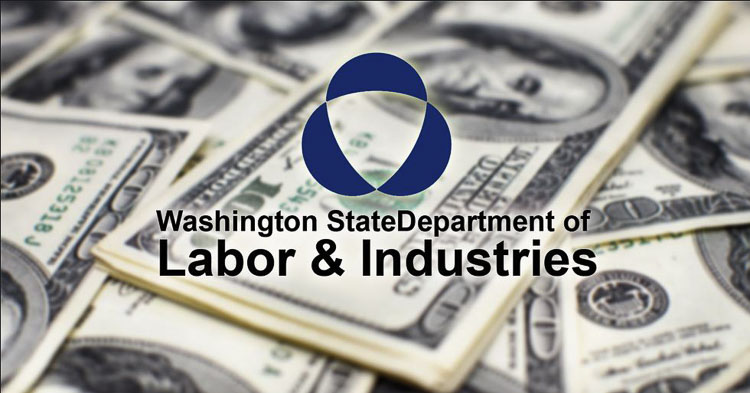
Mark Harmsworth of the Washington Policy Center reveals information on businesses the state has fined for not following the mask mandates imposed by the Inslee administration
Mark Harmsworth
Washington Policy Center
A document recently published by Washington State Labor and Industry (L&I), the government agency that enforces workplace rules, reveals the businesses that the state has fined for not following the mask mandates imposed by the Inslee administration.
When the data is broken down several troubling trends become apparent. The most obvious being the biased slant in the geographical and business targeting criteria that L&I has been using. Rather than taking a consistent and balanced approach, certain industry segments and locations are targeted for more detailed inspections and harsher fines than others.
Fines imposed by location
If enforcement were consistent with population and business location, the expectation would be that the largest cities (Seattle, Bellevue, Tacoma, Spokane, Everett) would be the cities with the most violations, since they have the greatest number of businesses and a higher chance of non-compliance. However, this is not the case as the table below shows.
The total fines against non-compliance were classified as general fines with a sub-classification for some businesses non-compliance as ‘Willful COVID Violations’.
Seattle, despite being the largest city in the state, had only $136,700 in general COVID fines issued. As a comparison, this is only slightly more than Port Orchard, with $135,300.
The total fines issued against businesses by the state for mask non-compliance was $8,977,336.
Industry types
L&I has also been paying particular attention to specific industry segments with a special tracking flag assigned to the industry type. The construction industry, despite the majority of construction work being performed outside, takes the top spot for the number of citations issued.
The fines follow the same trend, with construction-based industries being the most fined by industry segment.
Inspections by county
Inspections by County, as you would expect, focused on Western Washington with the top two spots for the most inspections being taken by King and Pierce County. It’s surprising however, to see Yakima in the top 5 counties, besting Snohomish, a county with three times the population. Yakima saw enhanced and targeted inspections relative to the rest of the state and saw more stringent mask enforcement.
Of the targeted inspections, the majority were in Eastern Washington with Benton, Franklin, Grant and Walla Walla taking the next four top spots.
Incidentally, of the 8,306 COVID related inspections and consultations completed between March 1, 2020, and January 21, 2022, over 70% were initiated by either complaints or referrals to L&I.
L&I and Inequitable enforcement
Obviously, the data shows that L&I has not been targeting businesses, geographical locations in an equitable and fair way. It is difficult to understand how the tiny town of Brewster, with a population of just over 2,400 people, has businesses that were fined 20 times more than Seattle with a population of 660,000.
The safety of Washington residents is of course important but both residents and business owners have been sensible in their approach to the COVID-19 crisis and can obviously self-regulate to keep their businesses and our communities safe. Small business owners will continue to voluntarily do everything they need do to keep their guests and employees safe.
L&I should not be picking winners and losers through targeted mask enforcement and should re-examine its targeting criteria.
Mark Harmsworth is the director of the Small Business Center at the Washington Policy Center.













There is no evidence of bias here.
What you describe as bias in the cities is exactly what I would have predicted: that more rural areas housed the majority of law-breakers. This should be expected because people, business owners, managers and their like in those areas are much more likely to be part of the anti-[mask, covid, vaccine] crowd than denser populated areas like Seattle.
Likewise for industry types. I would expect more inspections at locations like construction (which includes finishing, carpentry, electrical, plumbing, sheetrock, flooring, ALL indoors) because they’re blind without inspections, whereas frequent violations in businesses that serve the community (Safeway, fast food, …) generate customer reports and complaints as an indicator of whether they follow the law.
On the county populations, there is probably an explanation for Yakima, but it is our 8th most populace county, so it’s not far out of its place. In any case, all we know from the report is that “we don’t know why it’s fifth,” and literally no more.
Oh, and the cause of the fines isn’t inequitable enforcement, it’s breaking the law. We can never catch every law breaker; some get away lucky. But it is not a defense to say “other’s may have gotten away with it.”
I’m all for pointing out inequities when it comes to COVID enforcement – and am absolutely not a fan of what our governments have presided over the past 2+ years.
BUT, in regards to the information on Brewster, WA – $2M of that “fine” wasn’t a fine; it was money that Gebber Farms agreed to spend on improvements to the conditions of their worker housing. For the spending, the actual fine was reduced to $10,000.
And the agreement wasn’t entirely COVID related either.
Because of the author’s claim regarding Brewster, I did a very short search on what that was all about – because a $2M dollar fine total (or, roughly $1,000 per resident) just didn’t past the smell test.
Again – not a fan of how COVID enforcement worked, nor a fan of the current administrations, but throwing up numbers without adequate research to make claims doesn’t help the overall cause.
“Many small businesses are folding all around the state – particularly small business restaurants, while Wal-Mart, Costco, Amazon, and Big Government get fat profits. Hey, that’s fair isn’t it? “
full story: Showdown at Spiffy’s Restaurant
Restaurant fined repeatedly for defying Washington COVID restrictions closes for good